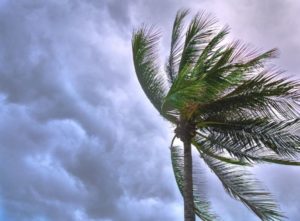Tracking a Tropical Storm with No Name

Tropical Storm Barry could form in the northern Gulf of Mexico. Or maybe not. That’s the difficulty broadcast meteorologists face this week.
There’s not much to the storm right now. The forecast is based on potential development as depicted by forecast models, which update and change every six hours.
Early Tuesday afternoon, I was talking with a client who is wrestling with the many aspects of the potential storm and trying to figure out what graphics to show. Yesterday’s models predicted a lot of rain for his location. Today, not so much. But there’s a possibility the models could change tomorrow and predict more rain again.
Start with the Story
Broadcast meteorologists pour over a lot of data. It’s easy to get lost in all the streamlines and isopleths. Data is used to determine what the weather will be, but the broadcast meteorologist decides what the story will be.
I encouraged my client to write down one to three messages for viewers to remember. That’s the story. Then determine what graphics will help tell that story.
Don’t overproduce. Only use graphics that explain the message and tell the story. Anything extra will only muddy the message.
And don’t overpromise. Forecast models will plot specific wind and rainfall amounts, but the numbers will change depending on where the storm tracks. Hold off on the details until you have some confidence in the data.
Model behavior
Only a handful of viewers care whether it’s the GFS or the ECMWF model. Even fewer understand the WMUT model. I know, because I made that one up! To the average person, all model names are gibberish.
Forecast models show different outcomes, different possible paths, different scenarios. So call it that. Viewers are interested in what the models show. However, they don’t care what the models are named.
Tease Ahead
Pick a day later this week when there will be more certainty in the weekend forecast. Tease ahead to that day.
If details remain murky all week, at least provide a timeline to give viewers an idea when the storm might form and when it might have an impact on the local area.
Words matter
Finally, don’t hit the viewer with an onslaught of colorful animated maps. Sometimes, a simple graphic listing one to three messages is the most effective way to communicate.
Tim Heller is an AMS Certified Broadcast Meteorologist, Talent Coach, and Weather Content Consultant. He helps local TV stations and broadcast meteorologists communicate more effectively on-air, online, and on social media.
Read more News & Insights from HellerWeather
